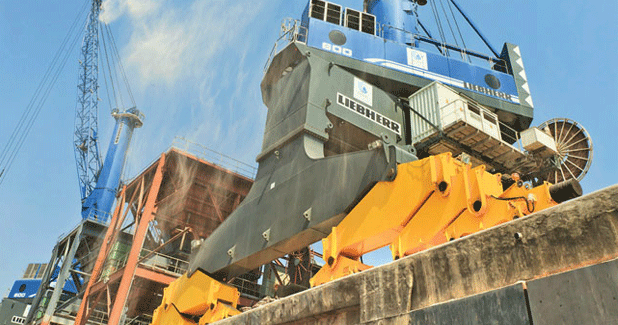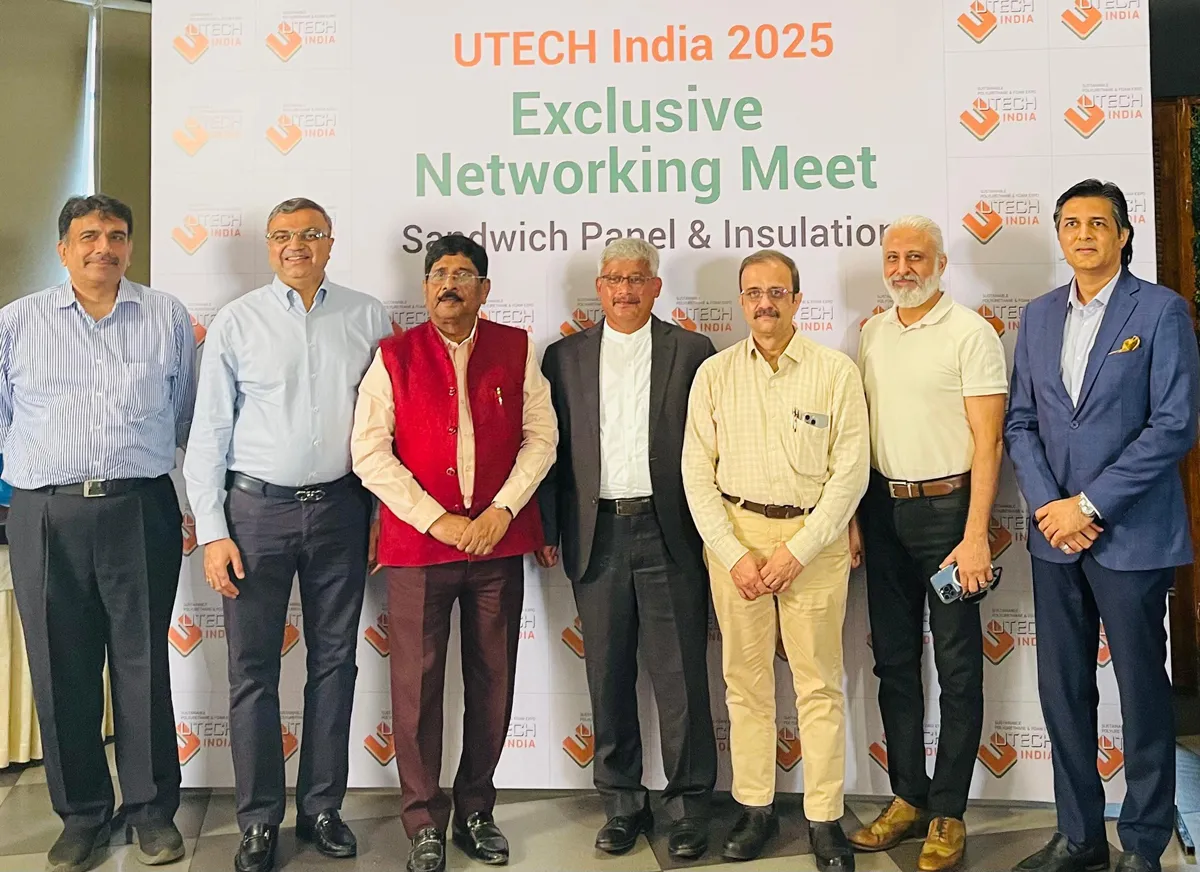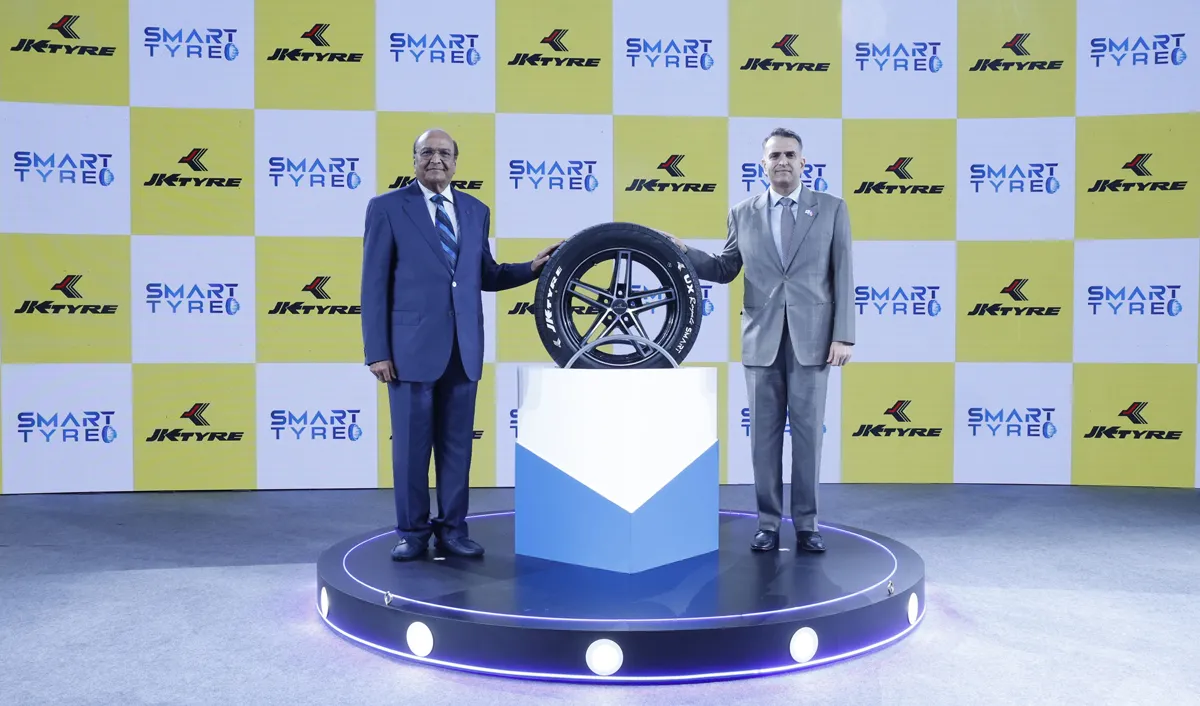Significant opportunities exist for vendors of port construction and operations equipment.
Cargo traffic at Indian ports stood at 934 mt last year. That the capacity at these ports is required to grow to 2,000 mt by 2017 creates significant opportunities for port contractors, developers and equipment vendors.
Opportunities ahoy What opportunities do vendors see?
¨All ports require jetties for which we are targeting the use of BUMA reverse circulation drilling rigs for drilling large diameters and depths in hard rock as well as through soft rock layers for the construction of foundation,¨ says Uthpala Suvarna, Director-Sales & Service, Suretech Infrastructure Pvt Ltd. ¨We also offer hydraulic impact hammers and vibratory hammers for driving sheet piles and casings. There is also scope for our cutter suction dredgers for the development of channels in ports, such as is happening at Machilipatnam Port.
¨The market for reach stackers and container handlers is charting a growth path,¨says Amit Sood, Associate Vice President, Material Handling Solutions Division, TIL Ltd. ¨Planned government investment in port containerisation projects, new ports, designated railway corridors and volume of freight being handled will further grow demand. Hyster´s equipment is already being used in Adani Port and Cochin Port. We see bright prospects for these as they help improve material handling efficiencies.¨ Sunil Kalra, Divisional Manager-Maritime Cranes, Liebherr India, sees great potential for Liebherr mobile harbour cranes in India. ¨In just a decade, Liebherr has sold 85 mobile harbour cranes in the country,¨ he says. ¨Customers include Krishnapatnam Port Company Ltd, Adani Hazira Port Pvt Ltd and Mundra Port and Special Economic Zone Ltd. More deliveries will follow on the back of growing value for the flexibility of mobile harbour cranes that can efficiently handle containers, bulk, general cargo and heavy loads. Additionally, economic development will boost demand as efficient cargo handling infrastructure in ports is essential for strong growth.¨
¨We have supplied lift trucks, reach stackers, rubber-tyre gantry cranes and ship-to-shore cranes to most big port terminals in India,¨ says Saeesh Nevrekar, Country Manager, Konecranes India.
¨All these products have potential; we see India as an important emerging market.¨ ¨Putzmeister concrete pumps are widely used during the pre-construction of ports for placing considerable mass concrete all over,¨ says Wilfried Theissen, Managing Director, Putzmeister Concrete Machines Pvt Ltd. ¨Our concrete pumps have been used at Tuna, Pipavav, Adani Hazira, Adani Dhamra, Mundra and Paradip ports and will continue to find takers.¨
Popular technologies
A positive trend is that port contractors are adopting technology more readily. ITD Cementation India Ltd has used a Suretech Infrastructure vibratory hammer (model ICE 815) at Tuna Port to drive casings of 1,500 mm inside diameter to a depth of 17 m. It used a BUMA hammer grab (model BM-H1425A) to dig at the site. Thereafter, it used a BUMA reverse circulation drilling rig (RCD model R1820) to drill further to a depth of 32 m.
According to Jayanta Basu, Vice President, ITD Cementation India Ltd, ¨The hammer grab-RCD combination is one of the best methods of drilling through hard rock for rock socketing in pile. It is just that advance casing needs to be driven prior to RCD operations. Driving casing with a vibratory hammer is always faster and a better technical method. A pile top rig RCD can be 10 times faster than the conventional percussive chiselling rock method. In fact, the conventional method is restricted in many parts of the world including our neighbouring countries because it causes noise pollution and unnecessary fractures in the rock strata.¨
Down-the-hole hammer, RCD and even the rotary method of drilling through hard rock are becoming popular in India. ¨Choosing the right equipment makes all the difference in productivity rates,¨ adds Basu. ¨We choose foundation equipment after studying the soil parameters, evaluating the strength, soundness, and hardness of rock, and the time available for construction.¨
Last year, ITD Cementation used the Putzmeister 1407D concrete pump to achieve 470-m horizontal pumping at Tuna Port. The Putzmeister truck-mounted concrete boom pump BSF 36.07 H delivered an output of 72 cu m per hour at Adani Hazira Port. It is a fully automatic pump and easy to clean - both the pipeline and accessories.
Meanwhile, Navayuga Engineering Co Ltd is geared up for the construction of the first structural breakwater in the world at Machilipatnam Port. A key feature of this structure is a wall of circular sheet piles. To drive these, Navayuga has procured the Kowan Still Worker (model PZ-1200). According to Dr P V Chandramohan, President (Technical), Navayuga Engineering Company Ltd, ¨Ninety per cent of the breakwaters in the world are constructed on rubble mound. A structural breakwater is expensive but necessitated at Machilipatnam Port by the soft soil conditions. The breakwater projects into the sea but we have limited its length to 1 km or so. Sheet piling for a breakwater is unusual. Sheet piling could not have been done from a piling gantry as the gantry could not have been supported like in the case of a jetty. Kowan Still Worker derives support from the driven piles and proceeds into the sea.¨
Greater productivity
In ports as on construction sites, the focus is on optimising productivity and cutting costs. According to Sood, ¨Hyster material handling equipment stands apart for its versatility and high engine performance. Hyster pioneered the rear-mounted ergonomically designed ´Vista´ cab on a laden container handler, designed to make it even easier for the driver to stack laden containers in the first row. Its latest tyre preserving technology (H16.00-22.00XM-12EC series of empty container handlers) helps cuts spend on tyres, which is typically the third biggest container handling cost after labour and fuel. Its power-on-demand hydraulics keeps power and fuel consumption low. And Hyster Big Trucks offer good access for maintenance, ensuring that maintenance costs and downtime are kept to a minimum.¨
¨Today, customers have become more value conscious and demand strong after-sales services,¨ observes Nevrekar.As takers grow for new technologies, Theissen hopes that Indian port contractors and developers will start to use the versatile Putzmeister Telebelt during construction and for loading and unloading ships carrying ores, minerals, coal and aggregates of size 10-150 mm. Telebelt TBS 130 and TBS 600 can place concrete at a practical speed of 210 cu m per hour and deliver materials at 810 tonne per hour. This allows ports to be operated and run from a single point - up to radii of 61 m.
Key differentiators
Nowadays, players are becoming more focused on pitching a clearly differentiated value proposition. For instance, the value proposition of MAIT rigs evolves from their cost-saving and work-site safety enhancing technologies. DV Brahme, Regional Manager, Mait India Foundation Equipment Pvt Ltd, describes a few features, saying, ¨MAIT Rigs can be fitted with a longer interlocking kelly bar than comparable same class rigs, for the same torque and drilling parameters. This means a smaller model MAIT rig can be used for a big job, which lowers project equipment costs. Bigger MAIT rigs are fitted with higher capacity winches and the MAIT casing system (MCS) torque multipliers that are particularly useful for marine jobs involving the insertion of long casings. MCS eliminates the need to deploy separate equipment like vibro hammer or casing oscillator, thus saving on costs and reducing the weight of equipment on the jack-up platform or gantry or barge.
This, in turn, enables contractors to use a smaller platform or gantry or barge. Having the winches mounted on their base instead of on the mast makes these rigs more stable. Their bigger articulation makes for safer operations as the rigs need not be taken to the very edge of the platform.¨
Liebherr differentiates itself on innovation and quality and has introduced game-changing new technologies to the Indian market. Liebherr´s Pactronic is a new hydraulic hybrid drive system for mobile harbour cranes and the LHM Noise-Control Initiative addresses concerns about noise pollution in ports. Last year, Liebherr launched its LiSIM® range of maritime crane simulators, a set of original software, hardware and drive systems for learning the precise handling of Liebherr´s maritime cranes. In 2014, Liebherr introduced SmartGrip for highly efficient bulk handling. It operates as an intelligent system that optimises grab filling rates in a self-learning manner.
Konecranes is pitching innovative lifting devices that make the Indian customer´s operations safer and more productive for the lowest possible ownership cost. This year, it has launched two new products developed specially for emerging markets. The Boxhunter container handling crane is a unique rubber-tyre gantry crane built around the operator. It brings the operator and the hoisting machinery down to the ground level and offers a graphical user interface, sophisticated video and laser technology to operate the machine. This simplifies the overall structure, making the machine more easily serviceable. Another Konecranes´ first is the world´s first hybrid (diesel or electric) reach stacker. According to Nevrekar, ¨At normal handling of fully loaded containers, the machine will consume at least 30 per cent less fuel than solely diesel-powered reach stackers.¨ To increase its value proposition aside, Konecranes is also offering refurbishment and modernisation services for all brands of port cranes, and maintenance training programmes.
User wishlist
As the prospects for port infrastructure developers brighten, more companies are venturing into the sector and contracting companies are turning entrepreneurs. Navayuga is a good example. It has been allotted the development of the port sites of Machilipatnam in Andhra Pradhesh and Astaranga in Odisha.
Most port infrastructure foundations built along the coast are constructed on soft marine clay. Such structures must be deep seated. ¨It is challenging construction,¨ says Dr Chandramohan. He explains why: ¨The foundation is created underground. It is blind work yet the foundation must bear heavy loads because ports are places where ocean freight gives way to land haulage. One side of berths must cater to the deep draught of the channel whereas heavy cranes operate at the deck level on the other side. This is attained either by piled platforms or high retaining structures.¨ That said, he opines: ¨One of the biggest handicaps of the Indian marine and port infrastructure equipment market is that no piling rigs are made in India so far. And piling rigs are the most important piece of equipment. Rigs used to be imported only from Europe. But cost is a major factor. Now China has entered the field. Their rigs are cheaper but their quality must improve. Another critical piece of equipment, trench cutters used in diaphragm wall construction, comes from overseas. And major dredgers used for making deep navigation channels for the port still come from Europe.¨
¨Piling barges, steel pile driving barges, jack-up platforms for construction, split barges and modular pontoons are in short supply,¨ adds Basu. Evidently, a sea of opportunities awaits vendors.
Quick Bytes
- Capacity of Indian ports: Required to grow to 2,000 mt by 2017.
- Demand drivers: Port containerisation projects, designated railway corridors and volume of freight being handled, etc.
- Players are becoming more focused on pitching a clearly differentiated value proposition.
- One disadvantage: No piling rigs are made in India so far.




















